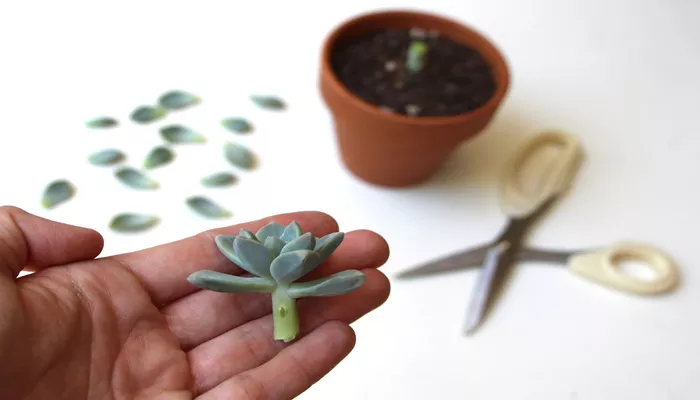Succulent terrariums have gained immense popularity due to their low maintenance and striking beauty. These miniature gardens not only brighten up your living space but also provide a glimpse into the intriguing world of plant care. One of the key aspects of maintaining a succulent terrarium is understanding its water requirements. This article delves into the specifics of watering succulent terrariums, offering a thorough analysis and practical insights.
Introduction to Succulent Terrariums
Succulent terrariums are small, self-contained ecosystems that typically consist of succulents, sand, pebbles, and soil. These plants are renowned for their ability to store water in their leaves, stems, or roots, making them ideal for terrarium environments where moisture levels can be challenging to control.
Understanding Succulent Water Needs
Succulent Characteristics
Succulents are adapted to arid conditions and have evolved to thrive with minimal water. Their thick, fleshy leaves are designed to store moisture, allowing them to endure prolonged periods of drought. This unique adaptation makes them well-suited for terrariums, where water management is crucial.
Factors Influencing Water Requirements
Several factors influence how much water a succulent terrarium needs:
Plant Type: Different succulent species have varying water needs. For instance, jade plants (Crassula ovata) require more water than echeverias (Echeveria spp.).
Terrarium Size: Larger terrariums may require more water due to increased soil volume and plant size.
Soil Composition: Well-draining soil mixes, such as those containing sand or perlite, help prevent overwatering by allowing excess moisture to escape.
Environmental Conditions: Temperature, humidity, and light exposure affect how quickly water evaporates and how often you need to water.
Watering Techniques for Succulent Terrariums
The Watering Frequency
Succulent terrariums should generally be watered less frequently than traditional houseplants. On average, a terrarium might need watering every 2 to 4 weeks, but this can vary based on the factors mentioned earlier. It’s essential to monitor the terrarium’s moisture levels and adjust your watering schedule accordingly.
Watering Methods
Bottom Watering: Place the terrarium in a shallow dish filled with water. Allow the soil to absorb moisture from the bottom. This method ensures that the roots get evenly hydrated without the risk of waterlogging.
Top Watering: Use a watering can with a fine spout to apply water directly to the soil surface. This method is suitable for small terrariums but requires careful attention to avoid overwatering.
Monitoring Soil Moisture
A key aspect of maintaining a healthy succulent terrarium is monitoring soil moisture. The soil should be allowed to dry out between waterings. A moisture meter or a simple finger test (inserting your finger into the soil to check for dampness) can help gauge when it’s time to water.
Signs of Overwatering and Underwatering
Overwatering Symptoms
Root Rot: Soft, mushy roots with a foul odor indicate root rot, often caused by excessive moisture.
Yellowing Leaves: Leaves that turn yellow and become translucent may be a sign of overwatering.
Mold Growth: The presence of mold or mildew on the soil surface suggests too much moisture.
Underwatering Symptoms
Wrinkled Leaves: Succulents with shriveled or wrinkled leaves may be suffering from a lack of water.
Leaf Drop: Leaves falling off or becoming brittle can indicate insufficient watering.
Stunted Growth: Slow or halted growth can be a sign that your succulent isn’t getting enough water.
Innovative Tips for Managing Water in Succulent Terrariums
Using Moisture-Absorbing Materials
Incorporating moisture-absorbing materials like silica gel or activated charcoal in the terrarium can help regulate humidity levels and prevent excess moisture buildup. These materials can absorb and release moisture as needed, maintaining a balanced environment for your succulents.
Creating a Watering Schedule
Establishing a regular watering schedule can help maintain consistency and prevent over- or underwatering. Consider using a calendar or reminder app to keep track of your watering routine, adjusting as necessary based on seasonal changes and plant needs.
Employing a Drip Irrigation System
For larger terrariums, a drip irrigation system can provide a controlled and consistent water supply. These systems can be set up with timers to ensure that your succulents receive the right amount of water without the risk of overwatering.
see also: How to Fertilize Indoor Succulents?
Conclusion: Mastering Water Management for Thriving Succulent Terrariums
Watering succulent terrariums effectively requires a nuanced understanding of your plants’ needs and the environmental factors at play. By recognizing the signs of overwatering and underwatering, employing innovative watering techniques, and incorporating moisture-regulating materials, you can create a thriving, low-maintenance oasis in your home.
Proper water management is not only crucial for the health of your succulents but also enhances the overall beauty and longevity of your terrarium. With careful attention and a bit of practice, you’ll ensure that your succulent garden remains vibrant and lush, offering a delightful glimpse into the fascinating world of desert flora.


